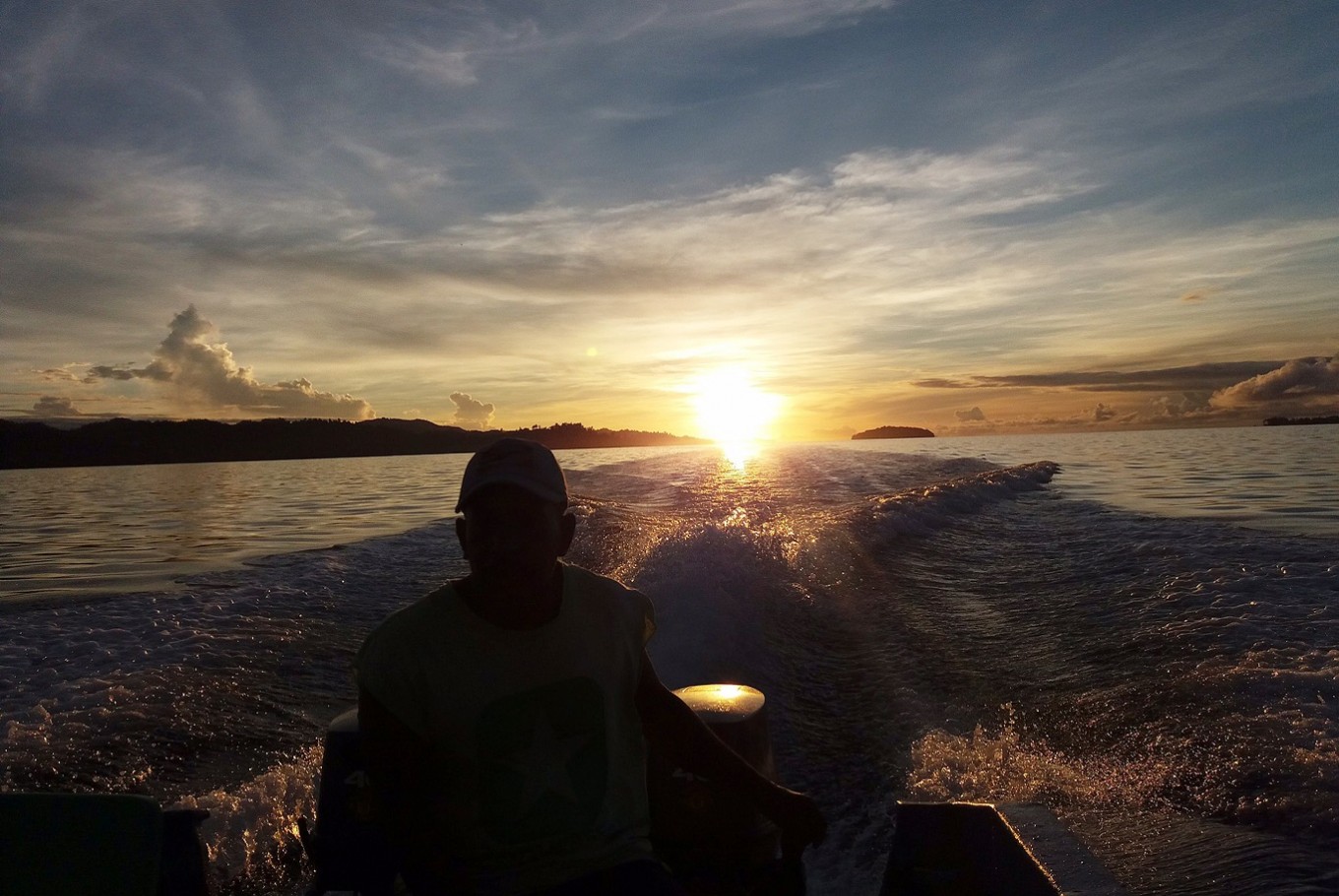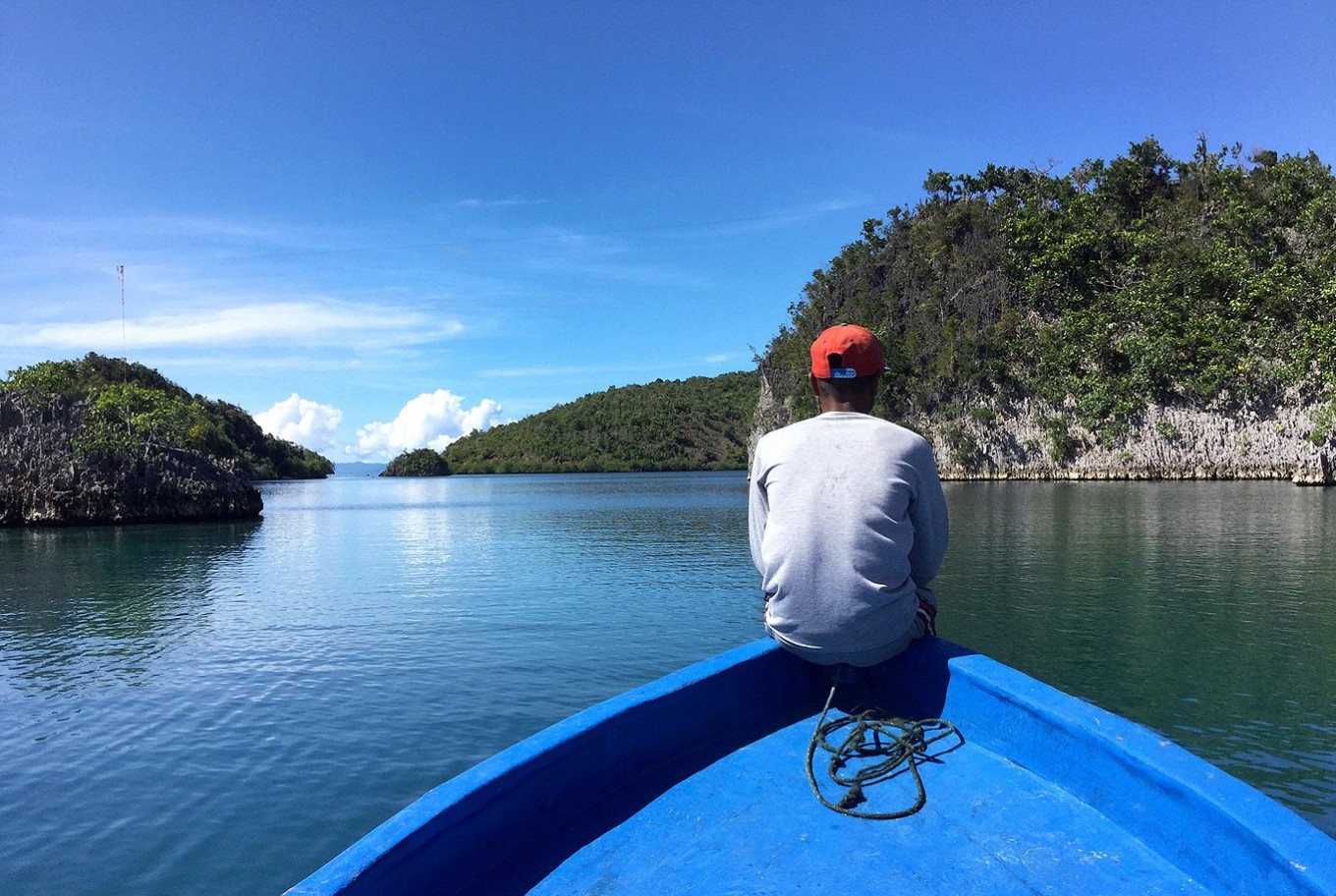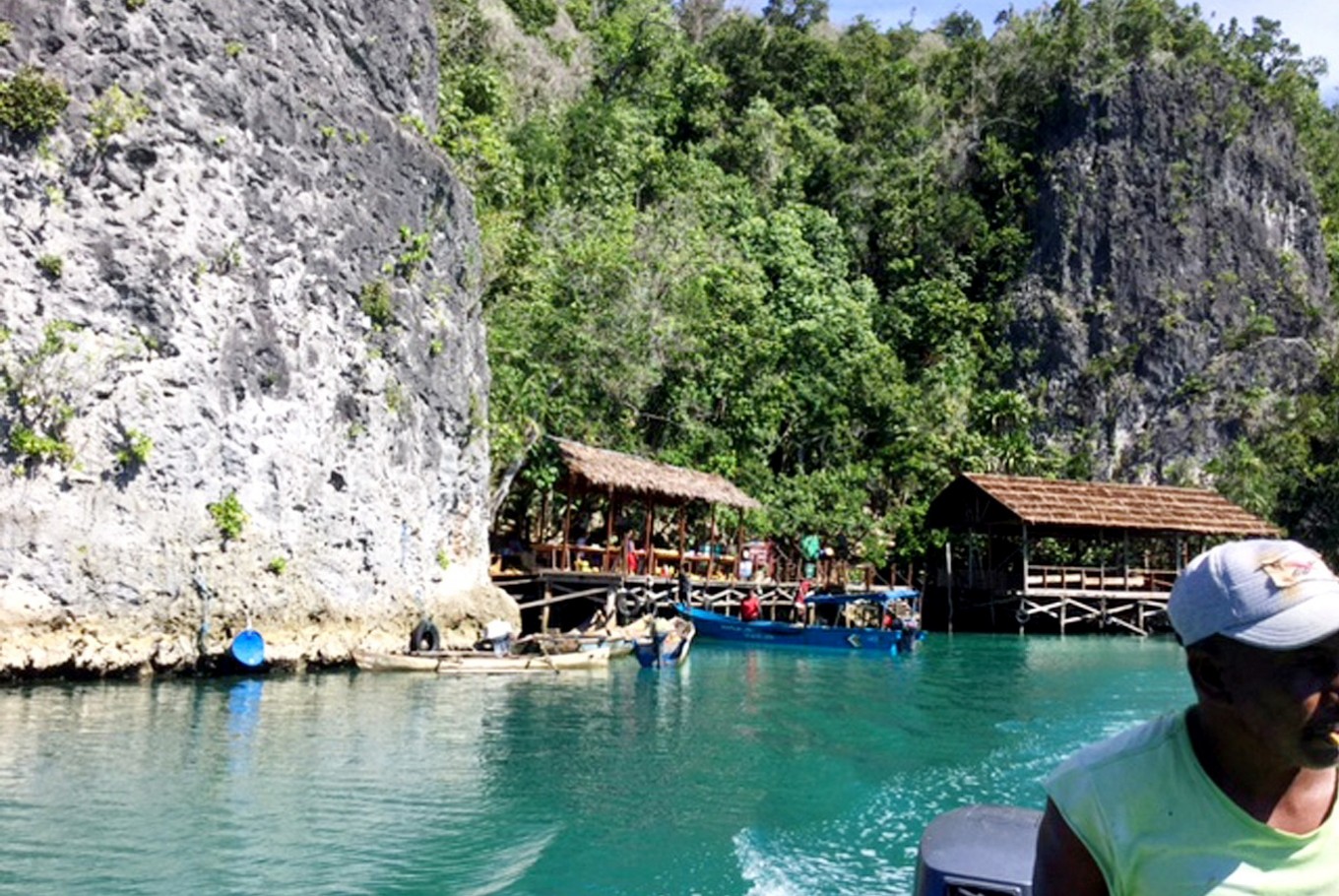Popular Reads
Top Results
Can't find what you're looking for?
View all search resultsPopular Reads
Top Results
Can't find what you're looking for?
View all search resultsPiaynemo offering magnificent karst islet scenery
To bathe in the picturesque view of a cluster of karst islets from the hilltop in Piaynemo in Raja Ampat, West Papua, is worth all the exhaustion endured along the way.
Change text size
Gift Premium Articles
to Anyone
V
isitors must climb 341 steps to reach the peak of the hill to see the majestic view of Piaynemo. But all the sweat is paid off once the scenery is in front their eyes.
It’s an amazingly gorgeous spectacle, with karst rocks jutting out of the surface of the sea to form a neat islet composition. The middle of the zone is filled with small and bigger karst islets. It is nature’s artistic design, which can also provide a barrier to protect against high waves.
“I always love visiting this place because it’s never boring. Every time I can’t help but admire this wonderful masterpiece of God,” said Aep Saepudin, a resident of Sorong, who frequently visits Piaynemo to enjoy the natural beauty.
“At last I’ve arrived here. Previously, I’d only seen its splendor through pictures shown by my friends. Now I can see it for myself. It’s truly magnificent,” said Lita, a tourist from Jayapura who was visiting Piaynemo for the first time.
 Break of dawn: It's highly recommended to visit Piaynemo at dawn because visitors can watch the beautiful sunrise over Raja Ampat after a two-hour trip by boat.(JP/Nethy Dharma Somba)
Break of dawn: It's highly recommended to visit Piaynemo at dawn because visitors can watch the beautiful sunrise over Raja Ampat after a two-hour trip by boat.(JP/Nethy Dharma Somba)
The early morning before sunrise is the right time to go to Piaynemo, especially for visitors staying in Waisai, which is two hours’ sailing from Piaynemo.
Read also: Guide to visiting Raja Ampat for first-timers
“The sea is calm in the morning so that the trip is enjoyable while watching the break of day,” Chandry, a local from Waisai, said.
A station at the entry gate to the location is manned by local youths and every boat is subject to an admission fee, which ranges from Rp 500,000 (US$37.50) for a large vessel to Rp 300,000 for smaller craft.
Two hills are the main destinations — the Telaga Bintang Peak and the Piaynemo Peak. Climbers should be careful if they want to climb Telaga Bintang because they have to hold on to tree roots or grab rock fissures on the narrow path to pull themselves up.
“The peak is so named because Telaga Bintang, a star-shaped lagoon, can only be seen from this hilltop,’’ said Aep.
 Tranquil ride: Visitors can enjoy a pleasant journey in the calm waters of Piaynemo.(JP/Nethy Dharma Somba)
Tranquil ride: Visitors can enjoy a pleasant journey in the calm waters of Piaynemo.(JP/Nethy Dharma Somba)
The second favorite peak is Piaynemo. As soon as our boat berthed at the pier we stepped on to a wooden platform. There was no sandy beach, only rocks. After that, we had to climb to the summit by 341 steep steps, albeit with two gazebos along the way for resting.
“Come on, brace up, all your fatigue pays off once you’re at the top,” urged a tourist striding up the steps.
Read also: What to do in Raja Ampat beyond diving, snorkeling
Sign boards advising visitors to maintain cleanliness and preserve the environment by not carving messages on tree trunks are positioned along the way. The thirst felt by tourists on that hot day was promptly quenched as they got back to the pier, where local people offered fresh young coconuts at Rp15,000 each.
 Starting point: Local residents take turns to sell coconuts in a couple of huts located on the pier, next to the 341 steps to the hilltop.(JP/Nethy Dharma Somba)
Starting point: Local residents take turns to sell coconuts in a couple of huts located on the pier, next to the 341 steps to the hilltop.(JP/Nethy Dharma Somba)
Residents of Pam, Sakabu and Saosapir villages keep the place clean while selling the coconuts and also dried fish. Toilet facilities are across the quay, or 2 minutes by speedboat.
“We take turns selling coconuts for a week per village. We’re also in charge of keeping this area and its toilet facilities clean,” Ari Mambraku, 54, a Pam resident, said.
“It takes an hour by motorboat from my village to Piaynemo,” he said.
Locals are busy between October and December as they welcome dozens of foreign tourists who visit the two favorite tourist spots every day.







